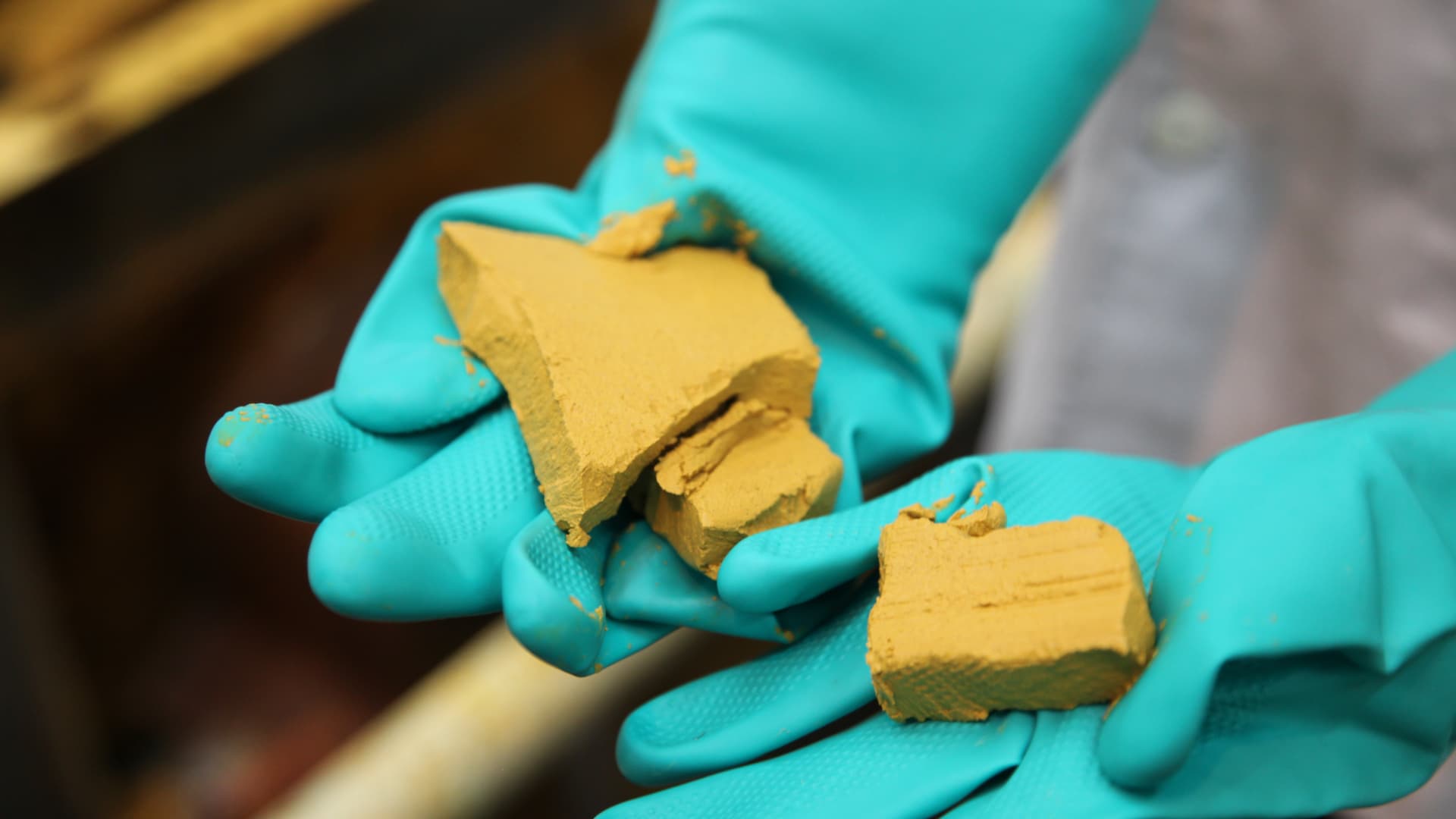Employee holding up yellowcake at a uranium processing facility at Turamidih Uranium Mill in India.
Pallava Bagla | Corbis News | Getty Images
The uranium renaissance has a slight hitch: the world’s largest producer of the yellowcake is staring at a production snag over the next two years.
And that’s about to send uranium prices, already at 16-year highs, on another rally.
Kazakh mining company Kazatomprom recently cautioned that it is likely to fall short of production targets through 2025 due to construction delays and “challenges related to the availability of sulfuric acid.” Sulfuric acid is critical in the extraction process as it is used to leach and recover uranium from raw ore.
Kazatomprom is the world’s leading uranium miner, accounting for over one-fifth of the world’s production. Kazakhstan also produces 43% of the world’s uranium supply, the largest slice of the global market for the heavy metal. Kazatomprom’s announcement comes as other major producers struggle. Canada-based Cameco has flagged lower production, while France-owned Orano has shut its Niger operation.
We’re in the middle of the biggest reactor build program in decades.
Guy Keller
portfolio manager at Tribeca
“We’re coming from a decade of under supply,” said Guy Keller, portfolio manager at investment and advisory firm Tribeca. He added that the deficit will continue as “we’re in the middle of the biggest reactor build program in decades.”
Uranium is a key material in nuclear power production and demand has soared as governments try to shift away from carbon-emitting fuels and reduce their reliance on Russian oil and gas.
Around 60 nuclear power reactors are under construction in 17 countries and another 110 are in the planning stages. Most projects underway are in Asia, particularly China.
At the COP28 climate change conference, more than 60 countries backed a plan to triple global renewable energy capacity by 2030, bringing nuclear energy back into the spotlight as an alternative power source.
That’s pushed prices higher, with uranium surging to a 16-year high, according to data provided by UxC. Uranium was recently trading around $106 per pound and analysts expect prices to continue to rally.
Citibank expects uranium prices to average $110 per pound in 2025.
“The main fundamental drivers of the bull market have been the closure of mines due to years of overproduction and low prices,” the bank wrote in a report published Monday.
Jefferies is also bullish on the metal.
“With short-term dynamics remaining supportive, prices seem on course to exceed the June 2007 all-time highs of US $136/lb,” the brokerage wrote in a research note.
Geopolitical supply concerns
Cooling towers at a nuclear power plant in Slovakia.
Janos Kummer | Getty Images News | Getty Images
“This confluence of factors is setting up an even larger projected supply deficit in the coming years and potential disruptions to the nuclear fuel supply chain,” Ciampaglia told CNBC in an email.
As a result, countries that rely heavily on nuclear power may need to diversify.
France, which derives up to 70% of its electricity from nuclear energy and is the most dependent, has not received new uranium shipments from Niger since a coup last year. Uranium exports out of Niger, the world’s seventh largest producer of the metal, have effectively stopped since a military coup in July.
“If the situation is not resolved, France will have to find alternative supply sources,” Ciampaglia added. French President Emmanuel Macron has recently made trips to uranium powerhouses Kazakhstan, Mongolia and Uzbekistan in search of new supply partnerships.
Still, consumers are unlikely to feel the effect of these disruptions just yet.
“Most utilities contract for fuel under long-term contracts, so they are unlikely to experience instant sticker shock from current higher prices,” said Jonathan Hinze, President of UxC, adding that he does not see “a hugely detrimental effect on electric utilities and power prices.”

